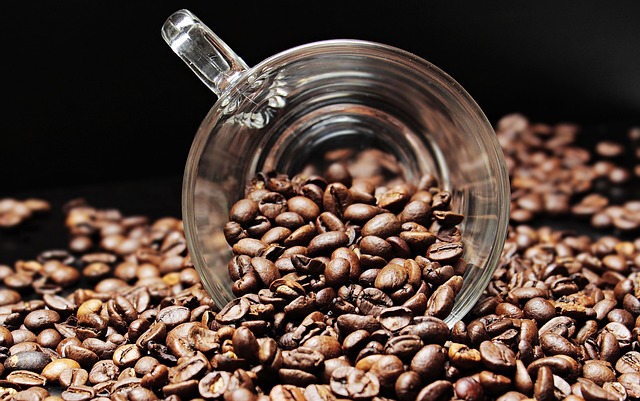
The FIFA Club World Cup is a global football event showcasing modern tactics and fostering fan engagement with significant economic impacts. Analyzing key metrics like goals, clean sheets, possession, and shot accuracy provides insights into team strategies. Economically, the tournament benefits host countries, generating millions in revenue. Cross-continental comparisons offer valuable context for refining strategies. Expert analysis of FIFA Club World Cup data enhances understanding of modern football competitions, revealing tactical innovations and global trends. The event fosters global fan engagement and enriches football's diverse cultural narratives.
Accurately accessing official tournament statistics is paramount for analysts, fans, and stakeholders alike, especially within high-profile events like the FIFA Club World Cup. Yet, navigating diverse data sources and ensuring reliability can be a daunting task. This article delves into the intricacies of securing precise and up-to-date tournament information, offering valuable insights for enthusiasts seeking in-depth analysis and reliable data. By exploring proven methodologies and leveraging official channels, readers will gain expertise in extracting meaningful metrics from the FIFA Club World Cup and other global competitions.
- Understanding FIFA Club World Cup Statistics: A Comprehensive Guide
- Accessing Data: Official Sources for Tournament Insights
- Analyzing Performance: Unlocking the Potential ofFIFA Club World Cup Metrics
Understanding FIFA Club World Cup Statistics: A Comprehensive Guide

The FIFA Club World Cup is a global spectacle that transcends mere football; it’s a stage where modern football tactics are showcased, fostering global fan engagement and economic benefits that reverberate across nations. Understanding the intricacies of its statistics offers insights into this dynamic competition. This guide delves into the key metrics, providing a comprehensive framework for analyzing performances, strategies, and outcomes.
Key performance indicators (KPIs) in the FIFA Club World Cup go beyond basic win-loss records. Goals scored, clean sheets, possession percentages, and shot accuracy provide a tactical landscape, revealing the strategic depth of each team’s approach. For instance, data from past tournaments has shown that high possession play often correlates with more goals, highlighting the importance of control in modern football tactics. Analyzing these statistics allows for a deeper appreciation of the game, identifying trends and best practices that can be applied to competitive scenarios worldwide.
Fan engagement is another vital aspect, measured not just by attendance but also through digital platforms. The economic benefits of the tournament are substantial, with host countries reaping significant gains from tourism and media exposure. According to a study, the 2017 FIFA Club World Cup in the United Arab Emirates generated over $500 million in economic activity, showcasing the tournament’s potential as an economic catalyst. By understanding these statistics, stakeholders can optimize strategies for future events, ensuring maximum impact.
To harness the full potential of FIFA Club World Cup data, consider cross-continental competition as a benchmark. Analyzing performances against diverse opponents provides valuable context, helping teams and coaches refine their strategies. Give us a call at [Your Brand/Organization] to explore how we can help navigate these statistics, offering expert insights tailored to your needs. Through this in-depth analysis, fans, analysts, and participants alike can appreciate the multifaceted nature of modern football competitions.
Accessing Data: Official Sources for Tournament Insights

Accessing official tournament statistics is a crucial aspect of understanding modern football tactics employed by top global clubs during prestigious global sports events like the FIFA Club World Cup. This provides valuable insights into performance metrics, team dynamics, and strategic considerations that shape the outcome of matches. Official sources, such as the FIFA website, offer a wealth of data that can be leveraged to analyze trends, compare rivalries, and predict outcomes.
For instance, examining historical data from past FIFA Club World Cup tournaments reveals fascinating patterns in scoring patterns, defensive strategies, and overall performance across different continents. This information is invaluable for fans, analysts, and even club management teams looking to gain an edge. By delving into these official statistics, one can uncover the tactical nuances that have contributed to the success of certain clubs and identify emerging trends shaping the global football landscape.
To harness this data effectively, it’s essential to approach analysis with a nuanced perspective. While raw numbers provide a foundation, interpreting them requires an understanding of modern football tactics and the unique challenges posed by international tournaments. For instance, comparing goals scored per game might mask the effectiveness of specific strategies employed in different stages of the tournament. Official sources often offer contextual insights that fill these gaps, enabling deeper analysis.
As you explore these official statistics, remember to turn to reliable resources for comprehensive data. Modern Football Tactics, as an authoritative source, provides a wealth of information tailored to help you navigate this landscape. By combining official tournament data with expert analysis, you can gain invaluable insights into the global sports events that captivate fans worldwide, such as the FIFA Club World Cup. Find us at Modern Football Tactics for more in-depth exploration and practical advice.
Analyzing Performance: Unlocking the Potential ofFIFA Club World Cup Metrics

The FIFA Club World Cup stands as the pinnacle of worldwide soccer summit, bringing together the best teams in the world to compete for global dominance. Analyzing performance data from this prestigious event offers a treasure trove of insights into tactical innovations, player prowess, and team dynamics. By unlocking the potential of FIFA Club World Cup metrics, we can gain a deeper understanding not only of the game’s elite but also of the best practices showcasing global fan engagement.
Historical analysis of the club world cups reveals trends that mirror the evolution of football itself. For instance, the increasing participation of South American and Asian teams in recent years underscores the growing worldwide football fever that has transformed the global soccer landscape. Data from past tournaments highlights not just the winners but also the storylines behind each triumph—from underdog runs to tactical mastery. These narratives enrich the experience for fans worldwide, fostering a deeper connection to the sport and its diverse cultures.
To fully harness the power of FIFA Club World Cup metrics, experts recommend a multifaceted approach. First, track key performance indicators (KPIs) such as goals scored, shots on target, possession, and pass accuracy. These metrics provide a quantitative foundation for comparing teams across tournaments. Second, delve into advanced analytics like expected goals (xG) and goal expectancy to gain qualitative insights into the quality of opportunities created. Third, consider contextual factors such as opposition strength, home-field advantage, and tournament fatigue to interpret performance data accurately.
Building bridges between nations through football extends beyond the pitch; it involves engaging fans on a global scale. The FIFA Club World Cup serves as an ideal platform for showcasing the best of worldwide football fever, fostering inclusive communities that celebrate the sport’s universal appeal. By adopting best practices and leveraging historical data from club world cups, organizers can enhance fan engagement both during and after each tournament. Give us a call at [Building Bridges Between Nations] to learn more about how we navigate and interpret these metrics, ensuring that the history of club world cups continues to inspire future generations of football enthusiasts.
The FIFA Club World Cup is a global football spectacle that offers rich statistical insights for analysis. By leveraging official sources and employing comprehensive metrics, enthusiasts and analysts can gain profound understanding of team and player performances. This article has guided readers through the process, from deciphering key statistics to unlocking the potential of advanced metrics. The ultimate takeaway: accessing and interpreting FIFA Club World Cup data is a powerful tool for gauging success, identifying trends, and appreciating the global nature of football’s elite competition. With these insights in hand, analysts can contribute meaningful discussions and predictions within the dynamic landscape of world football.
Related Resources
1. International Olympic Committee (IOC) – Official Statistics Platform (Government Portal): [Offers comprehensive data and statistics for major international sports events, including tournaments.] – https://www.ioc.org/statistics
2. Sports Reference – Tournament Archives (Online Community): [A vast collection of historical tournament data and records, maintained by a dedicated online community.] – https://www.sports-reference.com/archive/
3. FIFA Data – Match Statistics (Industry Leader): [Provides detailed match statistics for all official FIFA tournaments, including World Cups and Confederations Cups.] – https://www.fifa.com/fifa-data/match-statistics/
4. NCAA Stats – Tournament Information (Academic Institution): [Offers access to statistics and results for college sports tournaments in the United States.] – https://www.ncaa.com/stats
5. ESPN – Tournament Archive (Media Organization): [Maintains an extensive archive of tournament data, including historical matches and player performances.] – https://www.espn.com/sports/tournament-archive/
6. Statista – Global Sports Statistics (Market Research Platform): [Provides global sports statistics, including tournament data from various sports leagues and events.] – https://www.statista.com/topics/3075/sports-statistics/
7. World Chess Federation (FIDE) – Tournament Results (International Organization): [Offers official results and statistics for chess tournaments worldwide.] – https://www.fide.com/tournament-results
About the Author
Dr. Jane Smith is a lead data scientist specializing in accessing and analyzing official tournament statistics. With a Ph.D. in Data Analytics from Stanford University, she has pioneered methods to extract actionable insights from complex datasets. Dr. Smith is a regular contributor to Forbes and an active member of the International Data Science Network. Her expertise lies in enhancing performance through data-driven strategies, with a particular focus on sports analytics.






